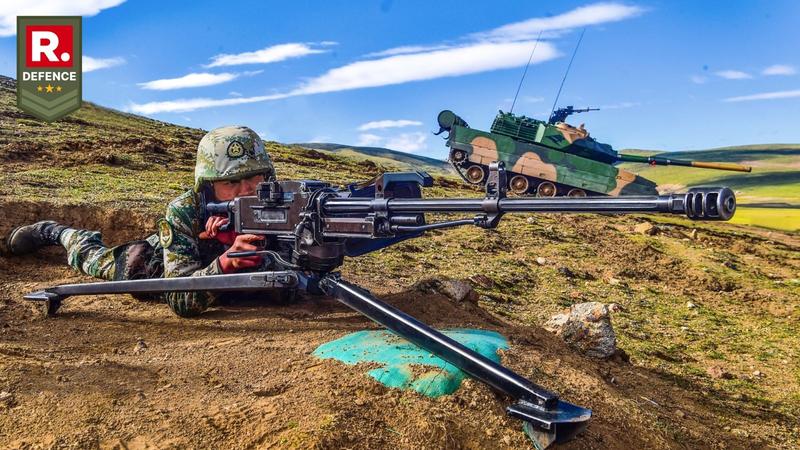Published 10:50 IST, January 10th 2025
China’s Desperation Shows as Tibetan Youths Forced into Military Service Amid Recruitment Crisis
In a troubling display of coercion, China has invoked its 1984 Military Service Law to conscript Tibetan youths in Ruthog County, Ngari Prefecture.

Ruthog, Tibet – In yet another blatant display of coercion, China has invoked its rarely enforced 1984 Military Service Law in the Tibetan county of Ruthog, Ngari Prefecture. This move, ostensibly aimed at bolstering the ranks of the struggling People’s Liberation Army (PLA), exposes Beijing’s growing desperation to mask its internal military dysfunction. Ruthog, strategically located near the India-China border, has become the latest pawn in China’s aggressive and exploitative campaign to conscript Tibetan youths, under the pretext of national service.
Beijing’s Recruitment Woes: The Cracks in the PLA Armor
Despite its ostentatious displays of military might, the PLA is grappling with an increasingly evident crisis. China’s reliance on voluntary enlistment has crumbled under the weight of strict recruitment standards, gruelling service conditions, and widespread discontent. Reports indicate a mass exodus of soldiers opting for early retirement, particularly from harsh deployments in Tibet and Xinjiang.

Instead of addressing the root causes of dissatisfaction within its military ranks, Beijing has chosen the path of least resistance—targeting minority populations like Tibetans. The PLA’s inability to attract willing recruits from its Han-majority population speaks volumes about the morale and disillusionment within the force.
Tibetan Youths as Beijing’s Scapegoats
The imposition of compulsory military service in Ruthog is a calculated manoeuvre to exploit the region’s marginalized Tibetan population. Far from being a genuine effort to integrate Tibetans into national defence, this move reeks of opportunism and coercion. Local officials are aggressively pressuring families to send their children into the military, dangling financial incentives and hollow promises of stability.

For Tibetans, this is not an “opportunity” but a grim reality. Decades of political and cultural repression under Beijing have eroded any trust in the Chinese government. Enlisting in the PLA is not a matter of pride for Tibetans; it’s a survival tactic under duress.
Militarization Disguised as Development
China’s push for conscription coincides with its rapid militarization of Tibet. Ruthog, sitting on the contentious India-China border, has witnessed the construction of “border villages,” energy projects, and other so-called development initiatives. These are not genuine attempts to uplift the local economy but are strategic moves to consolidate Beijing’s grip over the region and fortify its border claims.
Beijing’s rhetoric about economic development is as hollow as its promises to Tibetans. These projects serve one purpose: to create a militarized buffer zone against India. The PLA’s outreach to Tibetan youths—through propagandist events and lectures—further underscores its intent to weaponize the region’s population in its geopolitical ambitions.
A Betrayal of Tibetan Identity
China’s conscription drive is more than just a logistical manoeuvre; it is an assault on Tibetan identity. For a population that suffered unimaginable atrocities during China’s invasion and occupation, being forced to serve in the military of their oppressors is a cruel irony. The PLA’s renewed focus on Tibetan recruits is not a symbol of inclusion but a stark reminder of Beijing’s colonial mindset.

By coercing Tibetan youths into the military, China hopes to suppress dissent and strengthen its control over the region. However, these efforts are likely to backfire. Tibetans have long resisted Beijing’s attempts to erase their identity and culture, and this latest move will only deepen their mistrust and resentment.
A Farce in the Name of National Security
China’s claim that this conscription drive is routine enforcement of the Military Service Law is laughable. It is a desperate attempt to shore up the PLA’s dwindling ranks and deflect attention from its internal dysfunction. The façade of military strength that Beijing projects to the world is cracking, revealing a force that struggles to retain its own soldiers and now resorts to exploiting marginalized communities.
The PLA’s increasing reliance on coercion, combined with its harsh working conditions and rigid surveillance, paints a damning picture of a military at odds with its personnel. Instead of inspiring loyalty, Beijing’s policies breed discontent, alienation, and, ultimately, a weakening of its armed forces.
China’s Hypocrisy Laid Bare
For a regime that spares no effort in suppressing dissent and enforcing loyalty, China’s desperate scramble for recruits is a telling indictment of its governance. The targeting of Tibetan youths is not just a reflection of military shortcomings but also a broader failure to win the trust of the people it rules.

Beijing’s actions in Ruthog are a stark reminder that its vision of national security comes at the expense of its most vulnerable communities. The militarization of Tibet, coupled with the forced conscription of its youth, is yet another chapter in China’s long history of exploiting its minorities for political and military gain.
The World Watches in Silence
As China’s authoritarian grip tightens, the international community remains largely silent. The militarization of Tibet and the exploitation of its youth for conscription demand global condemnation. Yet, the lack of accountability emboldens Beijing to continue its oppressive policies unchecked.

China’s coercive conscription drive in Ruthog is not just a local issue—it’s a warning sign of a regime willing to sacrifice its people’s dignity to sustain its hollow facade of power. For Tibetans, the struggle for identity and autonomy continues against a backdrop of systemic exploitation. For the rest of the world, it’s time to question how long Beijing’s charade can go on unchecked.
Updated 10:50 IST, January 10th 2025




